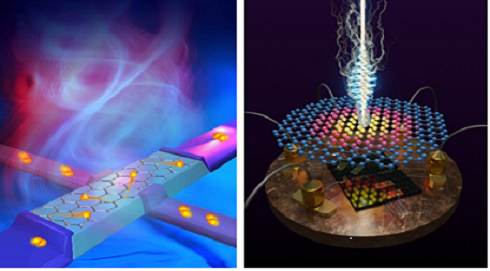[Prof. Gil-Ho Lee]]Graphene-based Josephson junction microwave bolome…
- No attach File
관련링크
main text

Caption: microwave bolometer
Sensitive microwave detectors are essential in radioastronomy1, dark-matter axion searches2 and superconducting quantum information science3,4. The conventional strategy to obtain higher-sensitivity bolometry is the nanofabrication of ever smaller devices to augment the thermal response5,6,7. However, it is difficult to obtain efficient photon coupling and to maintain the material properties in a device with a large surface-to-volume ratio owing to surface contamination. Here we present an ultimately thin bolometric sensor based on monolayer graphene. To utilize the minute electronic specific heat and thermal conductivity of graphene, we develop a superconductor–graphene–superconductor Josephson junction8,9,10,11,12,13 bolometer embedded in a microwave resonator with a resonance frequency of 7.9 gigahertz and over 99 per cent coupling efficiency. The dependence of the Josephson switching current on the operating temperature, charge density, input power and frequency shows a noise-equivalent power of 7 × 10−19 watts per square-root hertz, which corresponds to an energy resolution of a single 32-gigahertz photon14, reaching the fundamental limit imposed by intrinsic thermal fluctuations at 0.19 kelvin. Our results establish that two-dimensional materials could enable the development of bolometers with the highest sensitivity allowed by the laws of thermodynamics.


-2.gif)









 Login
Login


